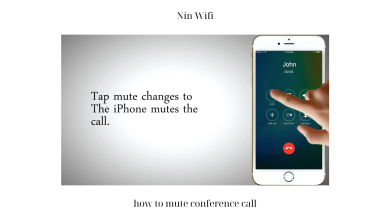How to Mute Conference Call: A Comprehensive Guide
Conference calls have become an essential part of the modern business world, but they can be a source of distraction and frustration if participants are not muted effectively. In this article, we will explore different ways to mute a conference call, tips for muting effectively, common mistakes to avoid, and troubleshooting mute issues.
Introduction
Conference calls have become an integral part of our daily lives, especially in the current work environment. With remote work becoming more prevalent, almost every organization is using conference calls to communicate and collaborate. However, background noise can cause disruptions and distract the participants, leading to ineffective communication. Hence, it is imperative to know how to mute a conference call.
Ways to Mute a Conference Call
There are several ways to mute yourself during a conference call, including:
Using the Mute Button on the Phone
Most telephones have a mute button that you can press to mute yourself during a conference call. To mute yourself, locate the mute button on your phone and press it. Some phones have a dedicated button for muting, while others require you to press a combination of buttons.
Using the Mute Option on the Conference Call Software
Conference call software such as Zoom and Skype have a mute option that you can use to mute yourself during a call. To mute yourself, locate the mute option on the software and click on it. You can also use the keyboard shortcut to mute and unmute yourself.
By muting yourself, you can avoid background noise and ensure that other participants can hear the speaker clearly.
That said, there are other ways to mute a conference call, and we will explore them in the next section of this article.
Tips for Muting a Conference Call Effectively
Muting yourself during a conference call is not enough; you need to do it effectively. Here are some tips to help you mute a conference call effectively:
Double-Checking If You Are Muted
Before you start speaking, it is essential to double-check that you are muted. This will help you avoid any embarrassing moments, especially if you have background noise.
Unmuting Yourself When Speaking
When it is your turn to speak, make sure to unmute yourself and speak clearly. Remember to mute yourself again once you finish speaking to avoid any background noise.
Avoiding Background Noise
Background noise can be a significant distraction during a conference call. Therefore, it is essential to find a quiet place to participate in the call. You can also use headphones to minimize any ambient noise.
Being Courteous to Other Participants
When participating in a conference call, it is essential to be courteous to other participants. Avoid interrupting others when they are speaking and following the guidelines set by the moderator.
Common Mistakes to Avoid When Muting a Conference Call
Muting a conference call may seem like a straightforward task, but it is easy to make mistakes. Here are some common mistakes to avoid when muting a conference call:
Forgetting to Mute Yourself
Forgetting to mute yourself can cause disruptions and distract other participants. Always remember to mute yourself when you are not speaking.
Accidentally Unmuting Yourself
Accidentally unmuting yourself can be embarrassing, especially if you have background noise. Therefore, it is essential to double-check that you are muted before you start speaking.
Not Checking if the Mute Worked
After muting yourself, it is essential to check if the mute worked. This will help you avoid any disruptions caused by background noise.
Troubleshooting Mute Issues
Even if you know how to mute yourself during a conference call, sometimes issues can arise. Here are some tips to help you troubleshoot mute issues:
Checking Your Device Settings
If you’re having trouble muting yourself during a conference call, the first thing you should do is check your device settings. Make sure that your microphone is working correctly and that you haven’t accidentally muted the device. You can also try adjusting the volume settings to see if that resolves the issue.
Checking the Conference Call Software Settings
If you’re still having issues muting yourself, check the conference call software settings. Ensure that the microphone is selected as the input device, and the speaker is selected as the output device. You can also check the software settings to see if there are any issues with the microphone or speaker.
Restarting the Call
If all else fails, try restarting the call. Disconnect from the call and reconnect, making sure that all settings are correct and that you’re muted if required.
Conclusion
Muting yourself during a conference call is essential to ensure effective communication and avoid distractions. Whether you’re using a telephone or conference call software, there are several ways to mute yourself. Always double-check that you’re muted, avoid background noise, and be courteous to other participants. In the end, muting effectively takes practice, but it’s worth it for a successful conference call. Remember, at Ninwifi.com, we provide you with the latest information and guides on various topics, including how to mute a conference call.
